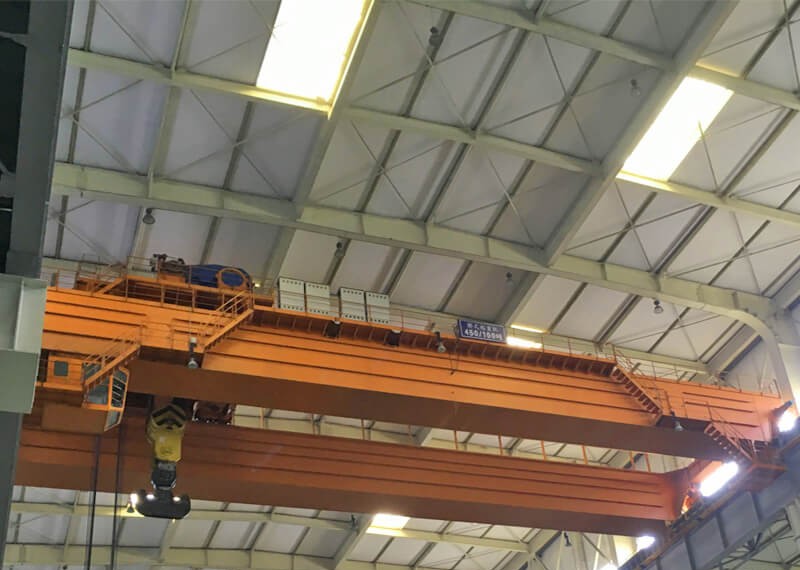
The problems and solutions of overhead cranes
Overhead cranes are a commonly deployed equipment guarantee in the construction industry. They have the characteristics of wide coverage, high degree of application, and rapid spread in China's industrial system operation. They are the basic equipment for the development of major industries in China. At present, it has successfully covered every corner of land, sea, air, civil, military, etc. On the other hand, bridge cranes are an important guarantee for the safe and effective operation of China's construction engineering systems, which run through the entire heavy industry and ensure the safe operation of industrial systems.
Pay attention to the analysis and solution of the operating faults of bridge cranes, in order to effectively avoid dangerous accidents, maintain the stability, smoothness and safe operation of heavy industrial work systems, and also reduce the economic losses of enterprises and protect the personal safety of workers.
The following is to discuss the problems and solutions of bridge cranes in the process of use.
1. Common problems and solutions of hooks
Hooks are the most commonly used pick-up devices for bridge cranes. They bear the entire load of the crane. In the process of use, once the hook is damaged or broken, it is likely to cause a major accident. The cause of damage and breakage of the hook is that the hook is cracked, deformed and damaged due to friction and overload. To prevent the hook from malfunctioning, it is strictly prohibited to overload it during use. During the inspection, pay attention to the opening of the hook and the wear of the dangerous section. At the same time, the hook should be annealed regularly. If a crack is found, it should be scrapped according to GB10051-88, and welding of the hook must not be performed. The inspection of the hook by the special equipment management personnel shall determine whether the hook can be used according to the requirements of GB10051-88.
2. Brake failure of crane and measures
The main reasons for the failure of the brake and the serious wear of the pin are: Because the brake is a key part of the bridge crane under high frequency working conditions, the crane will generate a large amount of dynamic load during braking, and it is under a long working frequency In the case of large loads and impacts on various parts of the crane, the pin shaft is seriously worn and the brake fails.
In the prevention and solution measures of this fault, the equipment inspectors of bridge cranes are required to carefully handle the braking requirements of various crane equipment, adjust strictly in accordance with the requirements in the manual of the bridge crane, and carefully check the crane components. The gap between the moving pad and the brake wheel. To ensure that the brake works normally under a small dynamic torque, the compression length of the main spring can be adjusted by adjusting the nut of the main spring. In addition, it is necessary to regularly use lubricants on various corresponding parts of the crane to ensure its normal working efficiency, regularly check the completeness of the brakes and its components, and replace the brake belts and pins that are worn out in a timely manner, and strictly Replace the components according to the scrapping standards of crane brake parts to ensure the update of crane parts and make them operate safely and effectively.
3.The reducer of the crane oil leakage and solutions
The main reasons for the oil leakage of the reducer are: first, due to the unreasonable design of the components, such as no vent holes or too small vent holes, etc., resulting in an unbalanced internal and external pressure of the reducer, and the phenomenon of lubricant overflow; The manufacture of the crane does not meet the strict design standards, which will cause the box joint surface of the crane to have insufficient accuracy, resulting in a tight seal of the reducer components and the phenomenon of leakage. The third is the improper use and maintenance of the reducer of the crane. Means, under the high-frequency operation of the crane, the dust accumulation of the ventilation hood will be excessive, causing the ventilation hood to be blocked, thereby causing a higher pressure inside the machine and generating oil spills.
In the prevention and resolution of faults, it is required to continuously improve the design standards of bridge cranes. Ventilation equipment is installed on the reducer hole cover of the crane to keep the pressure equal and smooth inside and outside the box to avoid oil leakage. For crane maintenance work, maintenance personnel are often organized to inspect the vent holes of the reducer, pay attention to the stability of each gasket, avoid its failure in work, and check the tightness of the bolts in time to ensure the normal operation of the components.


